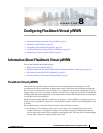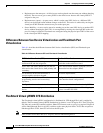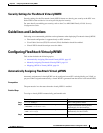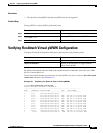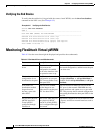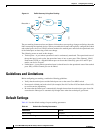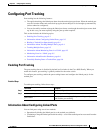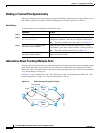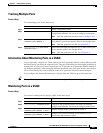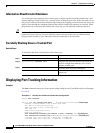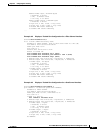
CHAPTER
9-1
Cisco MDS 9000 Family NX-OS Quality of Service Configuration Guide
OL-29284-01
9
Configuring Port Tracking
The port tracking feature is unique to the Cisco MDS 9000 Family of switches. This feature uses
information about the operational state of the link to initiate a failure in the link that connects the edge
device. This process of converting the indirect failure to a direct failure triggers a faster recovery process
towards redundant links. When enabled, the port tracking feature brings down the configured links based
on the failed link and forces the traffic to be redirected to another redundant link.
This chapter includes the following sections:
• Information About Port Tracking, page 9-1
• Guidelines and Limitations, page 9-2
• Default Settings, page 9-2
• Configuring Port Tracking, page 9-3Configuring Port Tracking, page 9-3
• Displaying Port Tracking Information, page 9-6
Information About Port Tracking
Generally, hosts can instantly recover from a link failure on a link that is immediately (direct link)
connected to a switch. However, recovering from an indirect link failure between switches in a WAN or
MAN fabric with a keep-alive mechanism is dependent on several factors such as the time out values
(TOVs) and on registered state change notification (RSCN) information.
In Figure 9-1, when the direct link 1 to the host fails, recovery can be immediate. However, when the
ISL 2 fails between the two switches, recovery depends on TOVs, RSCNs, and other factors.



